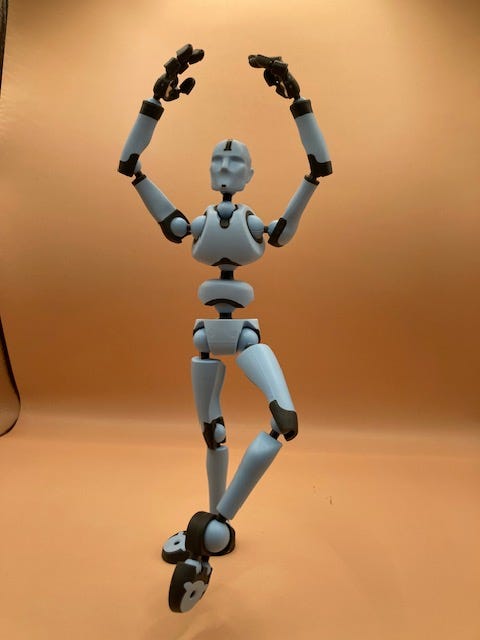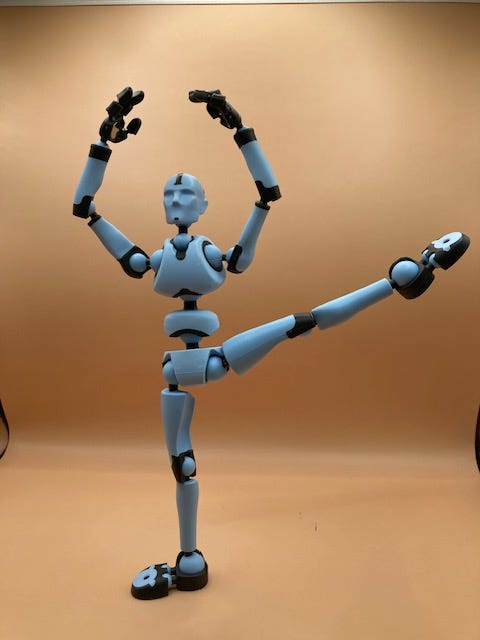French For Dancers: Rond de Jambe Jeté
French For Dancers
Demystifying dance terminology and steps for dancers and dance-lovers!
Issue 36: Rond de Jambe Jeté
Bonjour! Welcome to French For Dancers
Parlez-Vous Ballet?
(Do you speak Ballet?)
ROND DE JAMBE JETÉ
(ron-duh-jomb juh-tay)
Rond de jambe: circle of the leg
Jeté: thrown
Yet another form of rond de jambe, rond de jambe jeté is often used during barre combinations to help open the hip flexors and develop leg height in a dynamic way. It is also referred to as “grand rond de jambe jeté” or “jeté rond de jambe.”
This is a form of rond de jambe that does not stay at the same height all the way around, but is done in an arc, reaching the high point towards the side. This movement is performed more quickly than a grand rond de jambe, but requires just as much strength and precision. This gives it its thrown or jeté quality – although it is a controlled throw!
For en dehors (outside), brush the working leg into a low front attitude. It’s important to start the movement from a low height, to achieve the arc shape of the full movement. A good height to start is opposite the coupé or cou-de-pied position, no higher than mid-calf. Extend, or développé, the leg low to écarté devant (an open forward diagonal) as you begin to trace the arc around towards the back. The leg should reach its highest point to the side (à la seconde), or slightly behind the exact side in an écarté (open back diagonal) derrière position. The leg finishes its arc in tendu derrière (back).
For the en dedans (inside) one, brush the leg into a low back attitude, and take the développé in a low back écarté diagonal as the leg begins to travel forward. The highest point will be just in front of the à la seconde (2nd) position or écarté devant, and the leg lowers to tendu front.
Savoir-Faire
(Know-How)
Student Tip:
Imagine the arc (or parabola, if like math images!) that you’re going to trace before you begin the movement. Where will it start and end? Where will your high point be? Imagine tracing this shape in water, how would it feel? There would be a little resistance, but it should feel smooth. There is no big kick at the top that would create a splash, but one continuous movement throughout.
It is not the same as a traditional fan-kick (think Rockettes) where the leg brushes high and forward before fanning around; the rond de jambe jeté progresses into the développé as part of the arc. It’s also a different dynamic than a grand battement, which is a brush or kick in a straight line.
Teacher Tip:
Both the standing side shoulder and hip should remain stable and pulled up during this movement, to counteract the tendency to lift the working shoulder and/or hip as the leg travels around.
Arms can be held in 2nd or 5th (3rd for Vaganova). 2nd helps beginners maintain awareness of hip stability while the legs move, while 5th allows the working leg to circle higher through 2nd without bumping into the arm or shortening the curve of the arc.
Shoulders should stay still, especially when the arm is lifted high, as there may be some temptation to lift the outside shoulder to “help” the leg lift. The body should not tilt towards the barre. Similarly, the hips need to stay even and not hike up during this exercise.
À La Carte
(From the Menu)
Recommendations, reflections, and/or useful links
Bonne Fête des Pères!
Happy Father’s Day to all the Dance Dads out there! Whether you’re a Dad, an Uncle, a Grandpa, or anyone else who supports their young dance student by driving them to classes, building props, putting hair in buns, helping with costumes, volunteering their time at studio events, practicing choreography, or cheering from the wings/audience, thank you! This support is priceless and does not go unnoticed or unappreciated!
(I do not have a credit for this link, other than youtube.)
Merci!
(Thank you!)
Thank you for reading this newsletter! If you have friends who might enjoy this, please share the link with them!
- Peggy











